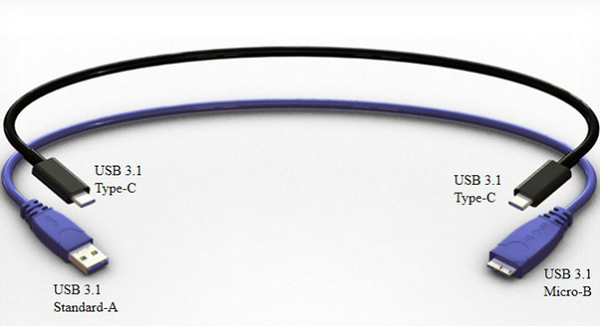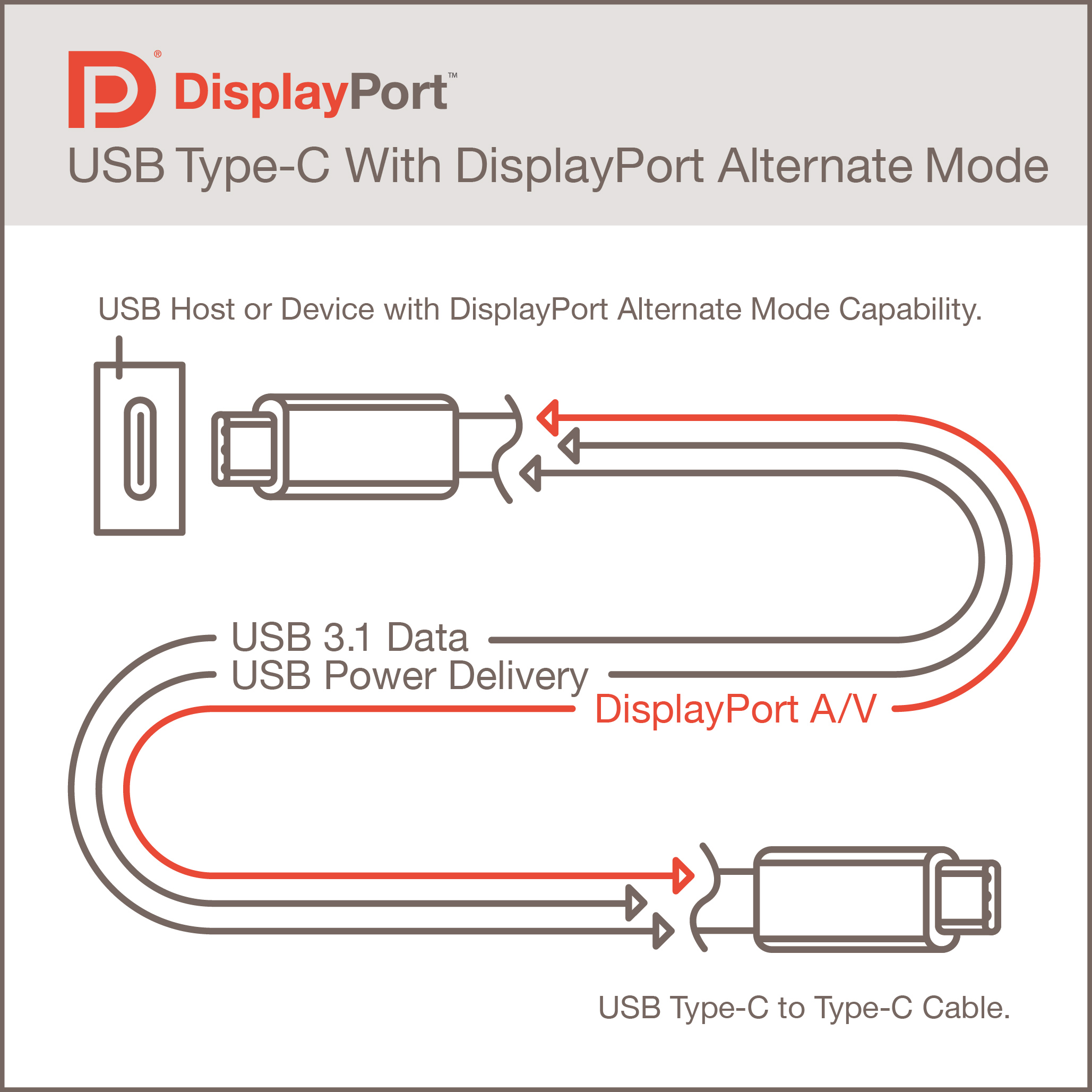DisplayPort Arrives On USB Type-C
The Video Electronics Standards Association (VESA) announced on Monday that it has teamed up with the USB 3.0 Promoter Group to create the DisplayPort Alternate Mode (Alt Mode) for the USB Type-C Standard. The news arrives after USB Type-C specification, which became finalized back in August, uses a reversible connector similar to the way Apple's Lightning cable works.
According to VESA, by using the DisplayPort Alt Mode, full DisplayPort audio and video performance can be achieved on a USB Type-C connector and cable. This capability is expected to drive resolutions past the 4K boundary and the need for USB 3.1. The move will also push third-party adapters to make a USB Type-C connection compatible with the current crop of displays.
"VESA utilized the Alternate Mode functional extension of the USB Type-C specification in the development of this new Standard," VESA's press release explained. "The DisplayPort Alt Mode repurposes some or all of the four existing SuperSpeed USB lanes to deliver full DisplayPort performance, and uses other signaling available in the USB Type-C connector for DisplayPort's AUX channel and HPD (Hot Plug Detection) function."
The association indicated that devices can connect to an existing DisplayPort monitor using a reversible USB Type-C to DisplayPort converter cable, but only if said devices support DisplayPort Alt Mode. These converter cables and adapters will comply with the USB Type-C specification, VESA said.
VESA revealed on Monday that the DisplayPort Alt Mode can transmit on just one or two of the cable's four "lanes," leaving room for USB data to simultaneously transmit back and forth without interruption. If all four lanes are used by DisplayPort Alt Mode, the tech could enable a 5120 x 2880 resolution on a compatible display while still leaving USB 2.0 room to carry data across the cable.
"In a docking station connection, for example, the use of two lanes for DisplayPort at 8.1 Gbps per lane would allow simultaneous transfer of SuperSpeed USB data (up to 10 Gbps in each direction) while also supporting a 4K UHD (3840 x 2160) DisplayPort monitor," the press release said. "The dock can also be configured with DisplayPort protocol converters to support HDMI, VGA and/or DVI monitors."
Early implementations of DisplayPort Alt Mode is expected to use DisplayPort 1.2a, which supports up to 5.4 Gbps per lane (SuperSpeed enables 10 Gbps). VESA indicated that a resolution of 4096 x 2160 at 60 Hz and up to 30-bit color will likely be made possible by using all four lanes.
Get Tom's Hardware's best news and in-depth reviews, straight to your inbox.
Follow Kevin Parrish @exfileme. Follow us @tomshardware, on Facebook and on Google+.

Kevin Parrish has over a decade of experience as a writer, editor, and product tester. His work focused on computer hardware, networking equipment, smartphones, tablets, gaming consoles, and other internet-connected devices. His work has appeared in Tom's Hardware, Tom's Guide, Maximum PC, Digital Trends, Android Authority, How-To Geek, Lifewire, and others.

